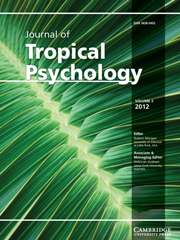Article contents
Comparative study on social-economic status, trauma and mental health disorders among older and younger refugees in Australia
Published online by Cambridge University Press: 24 November 2016
Abstract
This article investigated socio-economic status (SES), traumatic experience and mental health disorders among 103 refugees (52 males and 51 females) living in tropical and subtropical Australia. Specific focus was placed on comparing older refugees’ socio-economic status, traumatic experience and mental health disorders to younger refugees. The results showed that older refugees had lower levels of education, higher unemployment rates and poorer English skills and abilities compared to younger refugees. A greater percentage of older refugees perceived that they had received sufficient support from the broader community over younger refugees. Results also revealed that compared to younger participants, older participants aged over 50 years had significantly higher mean scores in trauma events (trauma exposure, loss event, loss of intrapersonal integrity, loss distress, loss of symbolic self, loss of home and interpersonal loss) and anxiety.
Keywords
- Type
- Articles
- Information
- Copyright
- Copyright © The Author(s) 2016
References
- 5
- Cited by




